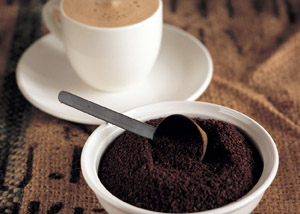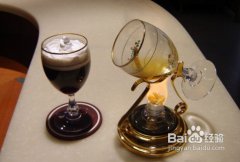Fruity Honduras Santa Barbara Estate Fine Coffee Beans Grind Roast Degree Treatment Method

Honduran coffee does not have very distinctive characteristics. The overall flavor is rich and extremely balanced, which is its biggest feature.
Medium or light acidity, giving a distinct but not intense sensation. Sometimes with a nice floral or fruity aroma (generally different regions, different altitudes of beans have different performance). It is not at all reminiscent of the turmoil in this country. Bitterness and pronounced sweetness. Honduran coffee taste overall balanced, acid and bitterness are not so strong, the balance between the two is very good.
Honduran coffee's extremely balanced character makes it versatile. It can be used to blend coffee or brewed as a single product, and the Italian espresso blended with Honduran coffee can have amazing results. Although in troubled times, coffee can also grow its own wonderful, it is not difficult to understand why so many people are so obsessed with this black liquid, to some extent this is not a simple love or habit, coffee is a mood or rely on it. I hope this country will soon show the vitality and splendor of coffee. Turbulent Honduras has a future as exciting as Honduran coffee.
Honduras is a mountainous country in Central and North America with a population of more than 8.3 million and an area of about 112,000 square kilometers. Located in northern Central America. It is bordered by the Caribbean Sea to the north, the Gulf of Fonseca in the Pacific Ocean to the south, Nicaragua and El Salvador to the east and south, and Guatemala to the west. More than three-quarters of the territory is mountainous and plateau. Mountains extend from west to east, inland for lava plateau, multi-mountain valley, coastal plains. Tropical climate, coastal plains are tropical rain forest climate.
Honduras coffee is imported from El Salvador. Coffee production was lukewarm until the Brazilian frost of 1975. Brazil was hit hard, coffee production plummeted, while Honduras took advantage of the opportunity to "rise", coffee production soared from 500,000 bags to 1.8 million bags, and was robbed. In Honduras, coffee production is divided into six regions, located in the west and south: Santa Barbara, El Paraiso, Copan, La Paz, Comayagua and Olancho, with an average planting height of more than 1100 meters. Coffee varieties are Arabica, 69% belong to HG "high coffee" grade, 12% belong to SHG "special highland coffee", 19% belong to CS. The main varieties are Typic, Bourbon, Caturra, Villa Sarch and Lempira.
Therefore, two kinds of coffee produced in Honduras are of very good quality, one is "highland coffee" grown at an altitude of 1,000 to 1,500 meters, and the other is "selected highland coffee" grown at an altitude of 1,500 to 2,000 meters, representing the highest level in Honduras. Most of them are exported to the United States and Germany.
Although Honduras coffee does not have very distinct characteristics, but the overall taste is rich and balanced is its biggest feature. In detail, it has moderate or light acidity, giving a distinct but not intense feeling. Sometimes with a slight floral or fruity aroma (generally different regions, different altitudes of beans have different flavor performance) slightly bitter and obvious sweet back. Honduras taste overall balanced, acid and bitter are not strong, the balance between the two is excellent. Therefore, Honduran coffee's extremely balanced characteristics make it widely used. It can be used to blend coffee or brewed as a single item, and Honduran coffee can be used to blend espresso for even more impressive flavor display.
Honduras is no less geographically endowed than neighbouring coffee-producing countries such as Guatemala and Nicaragua for coffee production. There are 280,000 hectares of coffee plantations in Honduras, mainly small coffee plantations, most of which are less than 3.5 hectares. These coffee plantations account for 60 per cent of Honduras 'coffee production.
In coffee plantations, because they are grown in mountainous areas, coffee beans are picked by hand and carefully processed to produce better coffee beans. Honduras harvests 3 million bags of coffee every year, providing a variety of coffee quality to everyone, and is now one of the top ten coffee exporters in the world.
Honduran coffee is imported from El Salvador. Coffee production was initially in a state of inexorable heat until the Brazilian frost of 1975. Brazil was hit hard, coffee production plummeted, while Honduras took advantage of the opportunity to "rise", coffee production soared from 500,000 bags to 1.8 million bags, and was robbed. Coffee production in Honduras really took off after that. Honduras is now the second largest coffee exporter in Central America (after Guatemala), mainly to the United States and Germany.
What is there to miss about coffee in this turbulent country?
- Prev

Unique aroma of boutique coffee beans in Santa Barara Manor, Honduras, geographical location and climate
At first coffee production was in a state of unavoidable heat until the frost in Brazil in 1975. At that time, Brazil was hard hit and coffee production plummeted, while Honduras took the opportunity to take advantage of the surge in coffee production from 500000 bags to 1.8 million bags and was ransacked. It was only after that that coffee production in Honduras really developed. Honduras now ranks second in coffee exports between China and the United States (only
- Next

Bitter balanced Coffee in Jamaica Blue Mountain Coffee Cliff Manor Flavor Coffee Bean Flavor and aroma characteristics
When it comes to Jamaica, everyone's eyes lit up immediately because it produced the best Jamaican Blue Mountain Coffee (Jamaica Blue Mountain) in the world. We absolutely believe that Jamaica Blue Mountain Coffee is the best coffee, its acid, sugar, alcohol and bitterness are well balanced, fragrant and smooth to drink, but its price is too high, although it is worth a try, there is no need to do so.
Related
- Does Rose Summer choose Blue, Green or Red? Detailed explanation of Rose Summer Coffee plots and Classification in Panamanian Jade Manor
- What is the difference between the origin, producing area, processing plant, cooperative and manor of coffee beans?
- How fine does the espresso powder fit? how to grind the espresso?
- Sca coffee roasting degree color card coffee roasting degree 8 roasting color values what do you mean?
- The practice of lattes: how to make lattes at home
- Introduction to Indonesian Fine Coffee beans-- Java Coffee producing area of Indonesian Arabica Coffee
- How much will the flavor of light and medium roasted rose summer be expressed? What baking level is rose summer suitable for?
- Introduction to the characteristics of washing, sun-drying or wet-planing coffee commonly used in Mantenin, Indonesia
- Price characteristics of Arabica Coffee Bean Starbucks introduction to Manning Coffee Bean Taste producing area Variety Manor
- What is the authentic Yega flavor? What are the flavor characteristics of the really excellent Yejasuffi coffee beans?

